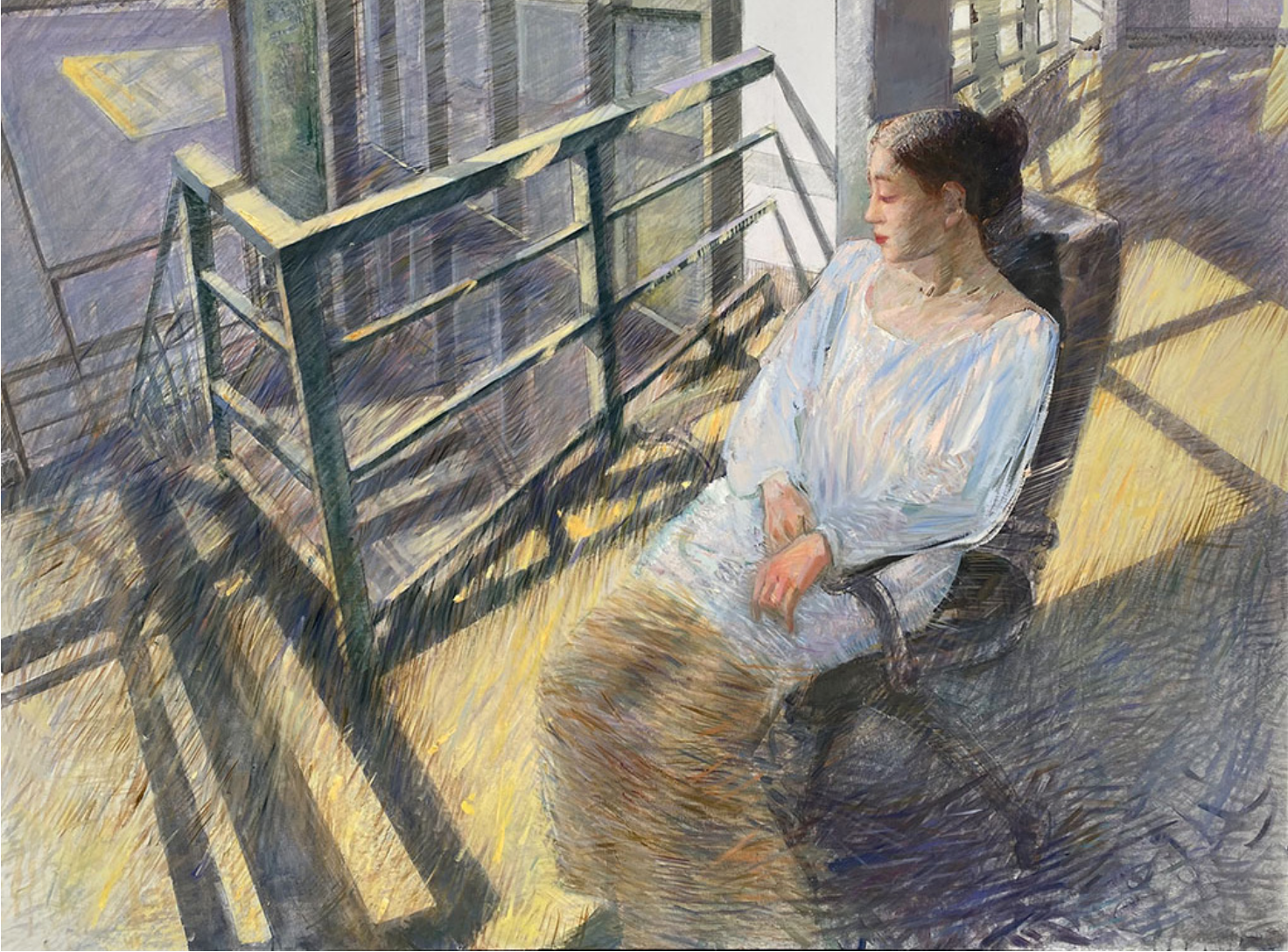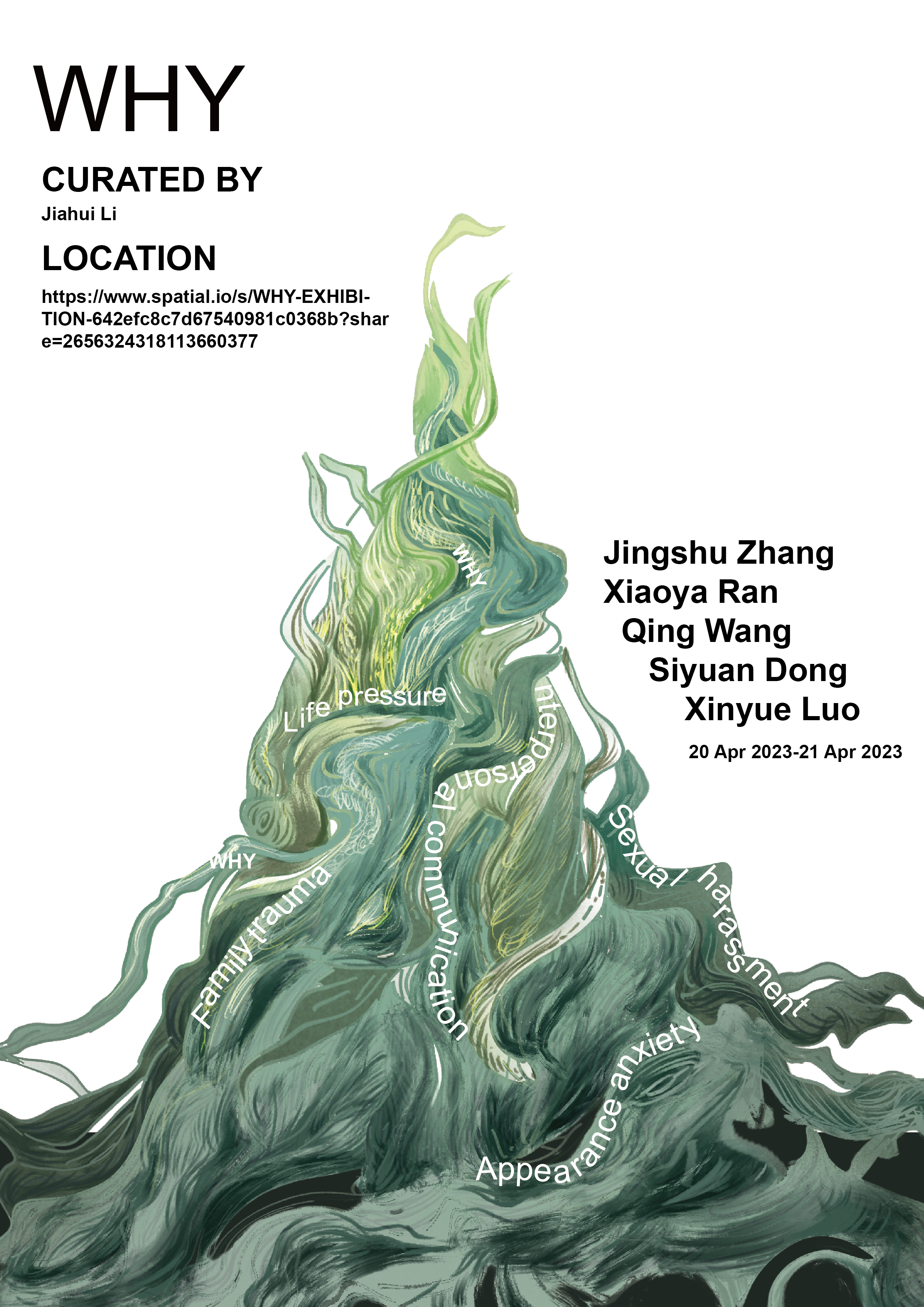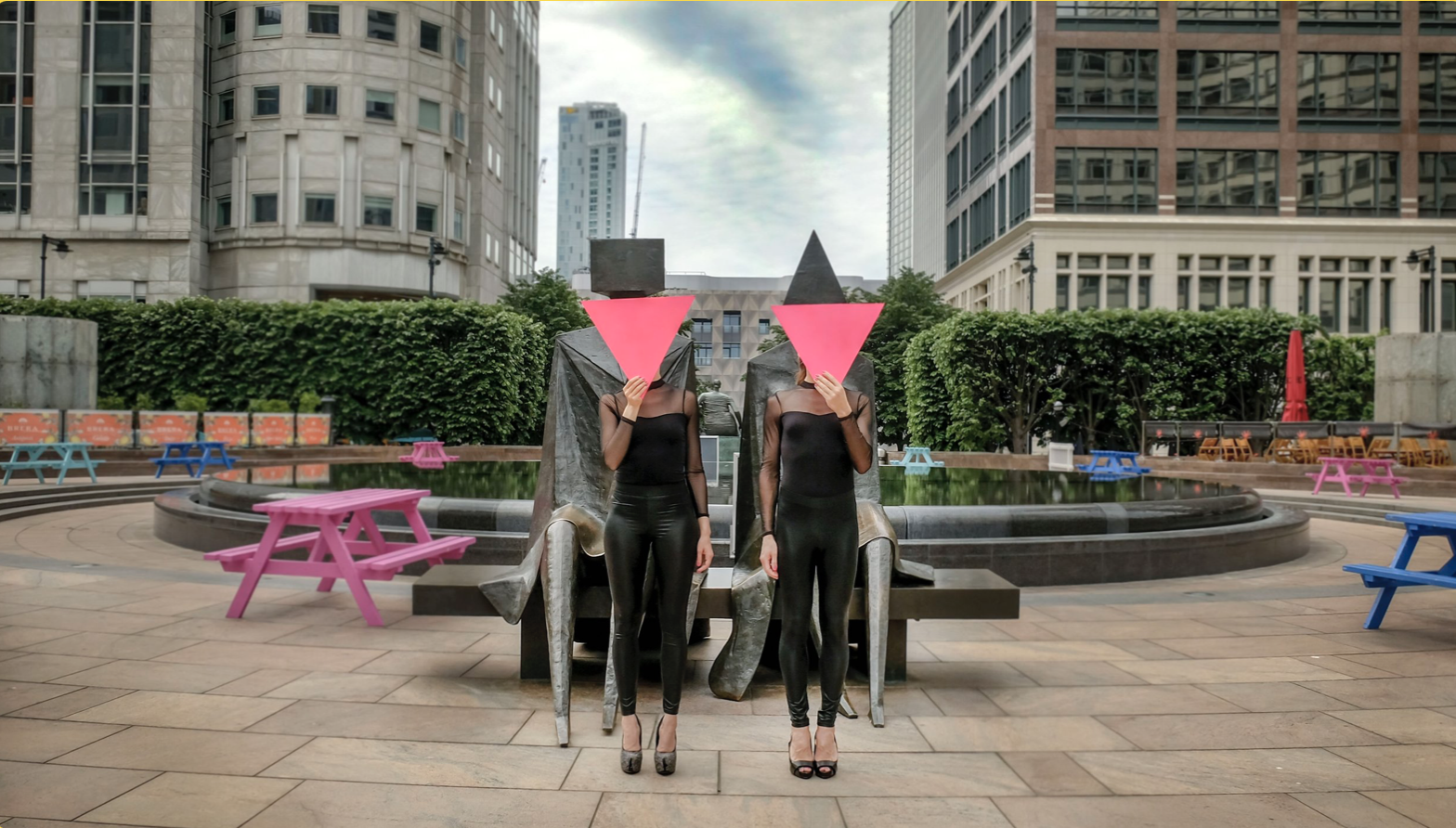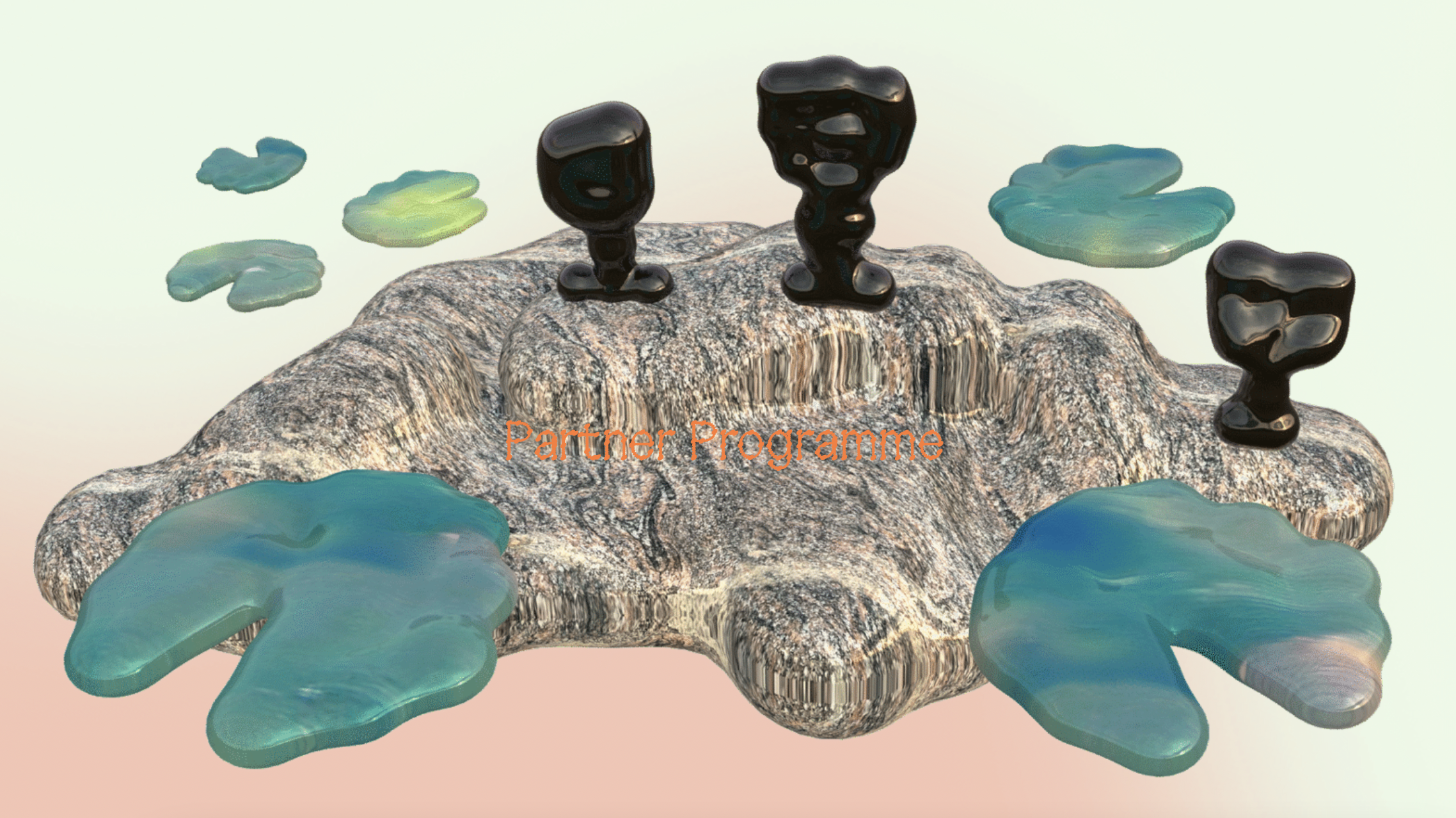First of all, WHY exhibition is about the source of negative emotions of unmarried and childless women in China. There are actually two reasons why I think about the negative emotions of this group. The first reason is objective factors. I have not collected works related to pregnancy, children, aging and so on. And I only received support from Chinese artists, not artists from other countries. Therefore, the theme is limited to the negative emotions of unmarried and childless Chinese women. The second reason is that I myself am in this stage, a very confused and painful stage. I didn’t know why I was having such negative feelings every day, so I made a questionnaire to ask women at my stage if they were confused and sad. The answer is that there are many sources of distress for women at this stage, such as family trauma.
Secondly, the feminist movement started a long time ago. Feminism took the lead in the United States and Europe. At present, feminist art has become a brand new global artistic phenomenon. “The impact of women artists on the contemporary art movement has resulted in a powerful and innovative feminist reworking of traditional approaches to the theory and history of art. ” Mentioning contemporary art and negative emotions reminds me of the artist Yayoi Kusama. To some extent, Yayoi Kusama is a contemporary female artist with great influence. In the early days, her House of Mirrors was filled with polka-dotted models of male reproduction. (figure 1)And could these genitals be interpreted as a visceral fear of male authority? Don’t these spots have anything to do with her miserable childhood and psychological problems? I think there’s a connection. Therefore, whether the emphasis on female psychology can be understood as an important social problem and topic. “women’s exposure to traumatic events results in significant psychological harm that gives rise to a number of mental health symptoms, including difficulties in regulating affect, problems in relating to others, and alterations in self- perception. ” (Herman, 2015) Women suffer from different causes of psychological trauma and the degree of injury, the mental illness is also different. Women’s mental health is also an issue that needs attention, which is why the works on display in this exhibition are negative rather than positive.
Figure 1 Infinity Mirror Room
Finally, the combination of feminist and contemporary exhibitions has already happened. Feminist exhibition is no longer a strange thing in contemporary art. For example, Cooling Out – On the Paradoxes of Feminism is a contemporary feminist exhibition curated by Sabine Schaschl-Cooper, Bettina Steinbrugge and Rene Zechlin. To some extent, this exhibition studies whether there is ambivalence or rejection of feminism among young feminist artists and the connotation of feminism. In addition, feminist exhibitions are also held in major Spaces in the field of contemporary art worldwide. The fifty-first Venice Biennale is called the so-called feminist Biennale. “These exhibitions are in stark contrast to the usual alternative non-traditional venues for first exhibitions, usually directed by the women’s liberation movement.” (Robinson, n.d.)Feminists created their works of art and exhibitions in the contemporary art stage in order to communicate what they wanted to express.
Reference
Herman, J. L. (2015) Trauma and Recovery: The Aftermath of Violence–From Domestic Abuse to Political Terror. New York: Basic Books.
Isaak, JA 1996, Feminism and Contemporary Art : The Revolutionary Power of Women’s Laughter, Taylor & Francis Group, London. Available from: ProQuest Ebook Central. [3 May 2023].
Robinson, H. (n.d.). Feminism Meets the Big Exhibition: Museum Survey Shows since 2005 – ONCURATING. [online] www.on-curating.org. Available at: https://www.on-curating.org/issue-29-reader/feminism-meets-the-big-exhibition-museum-survey-shows-since-2005.html#.ZFN9xy-gjx9 [Accessed 4 May 2023].
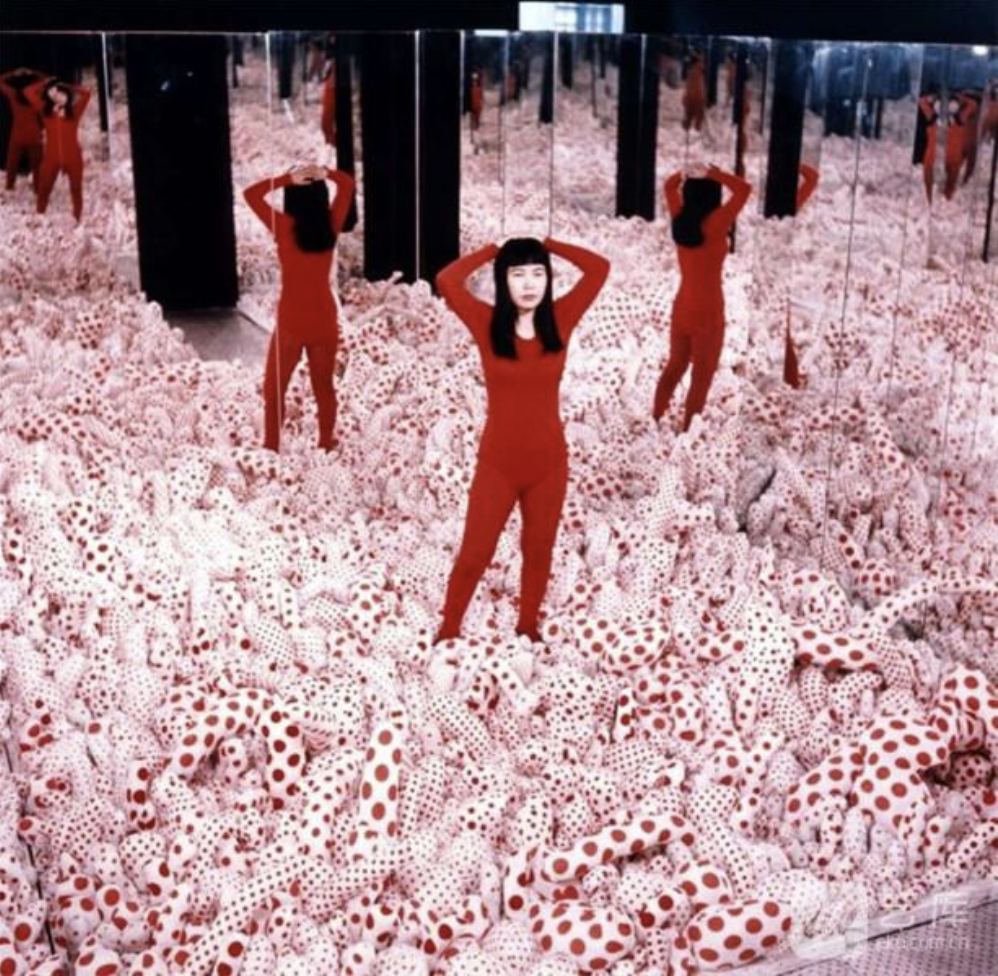
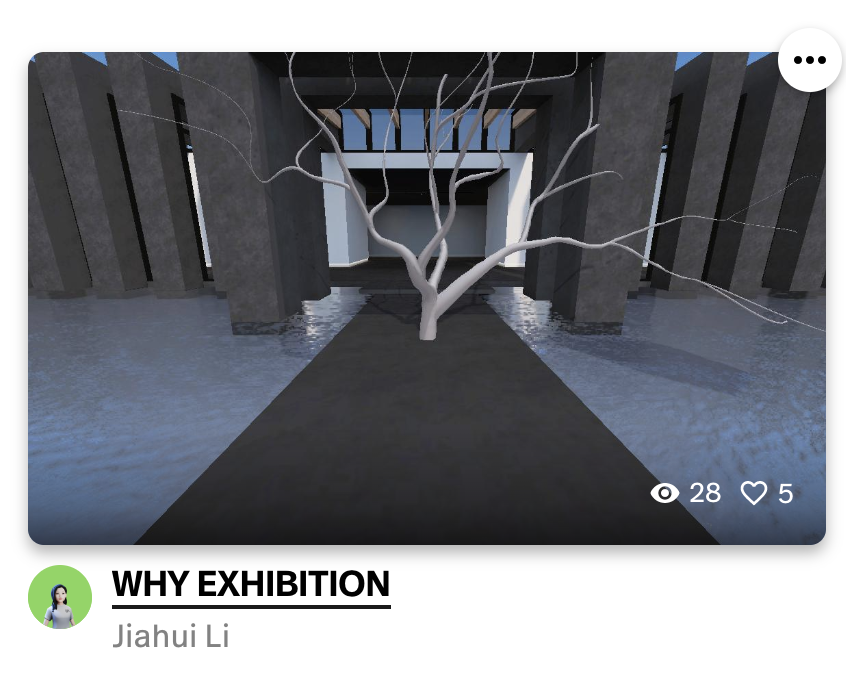
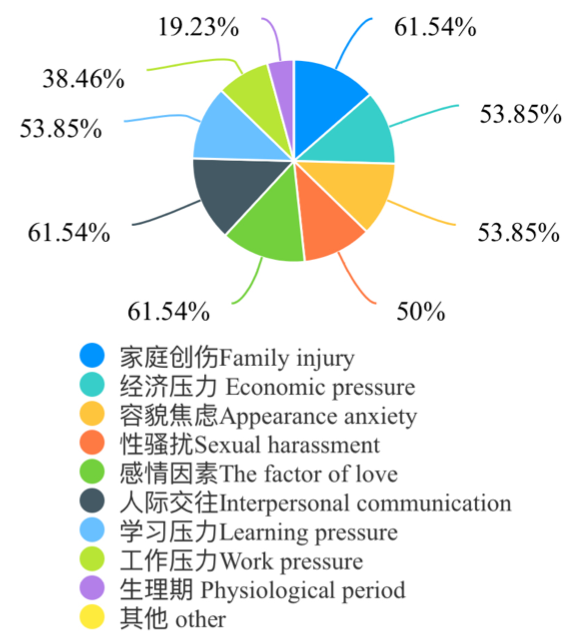
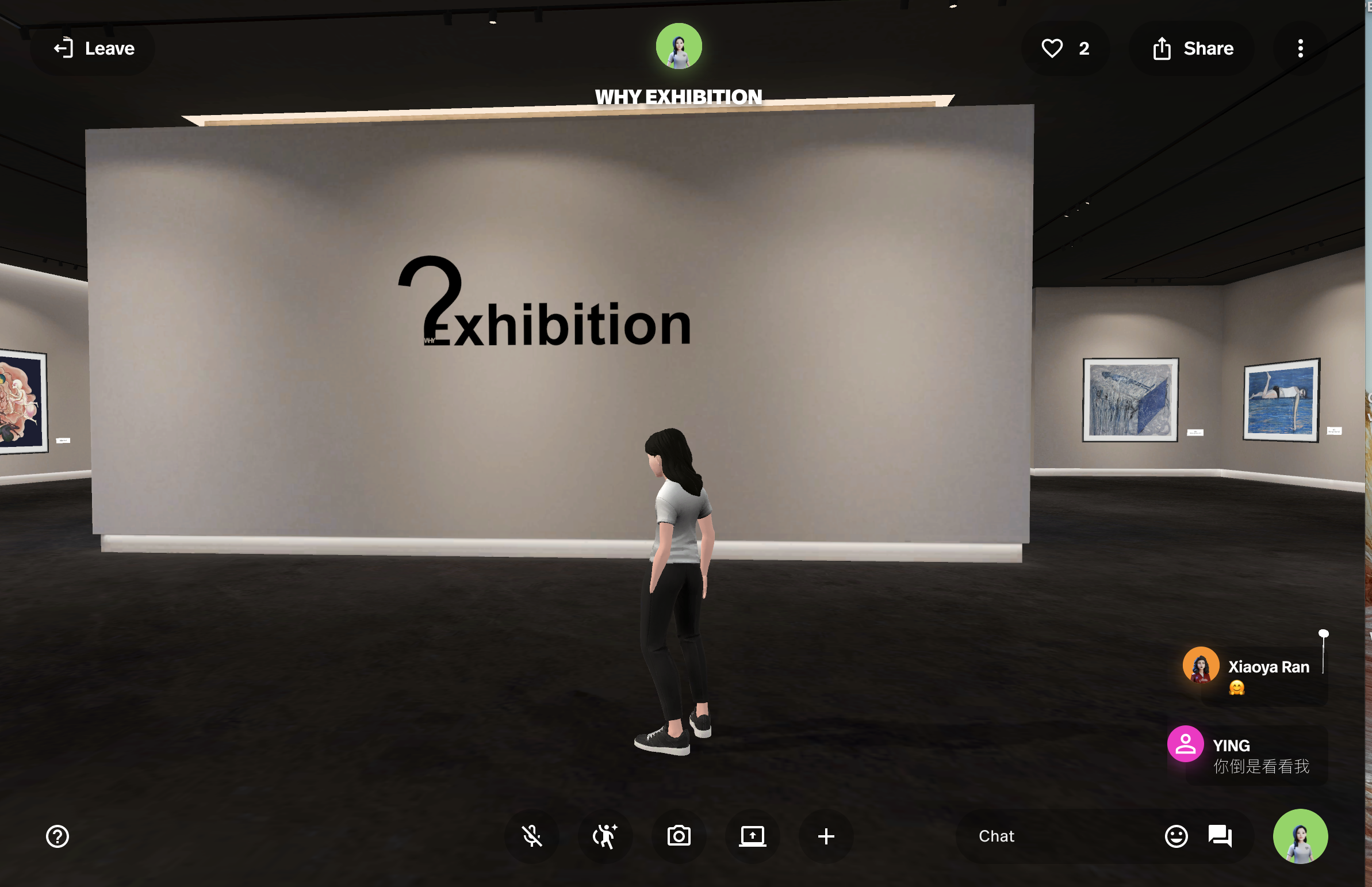
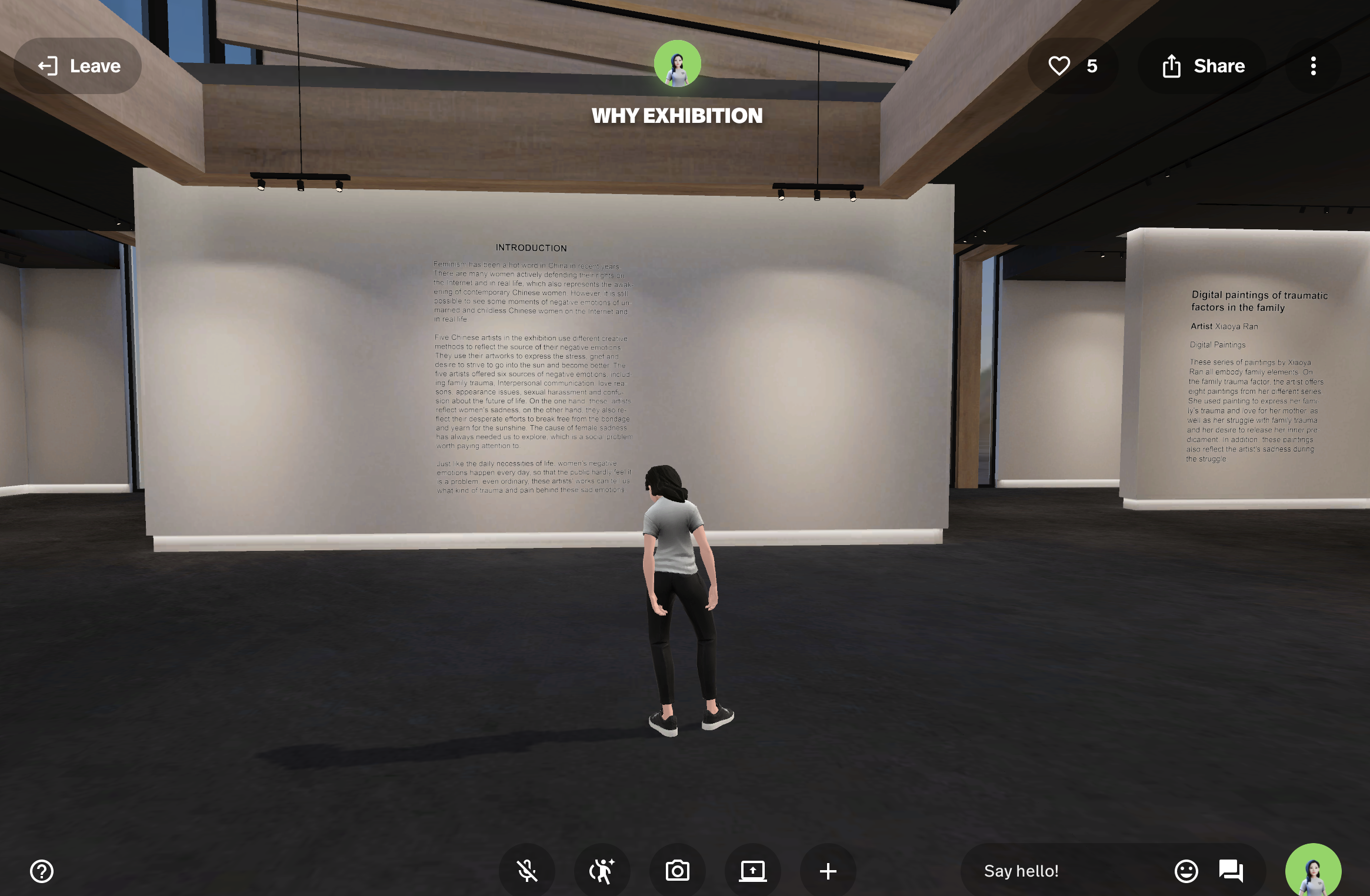
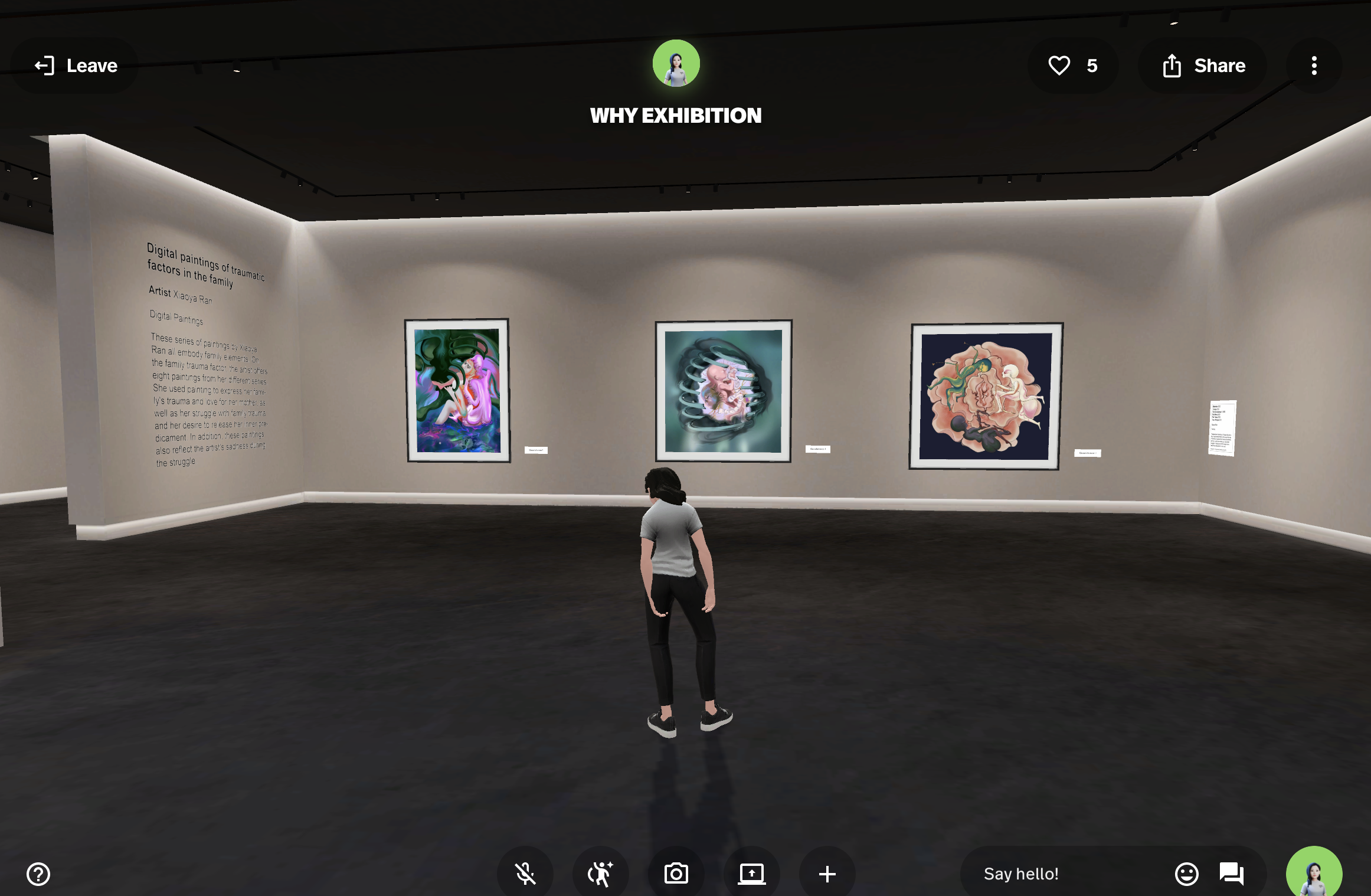
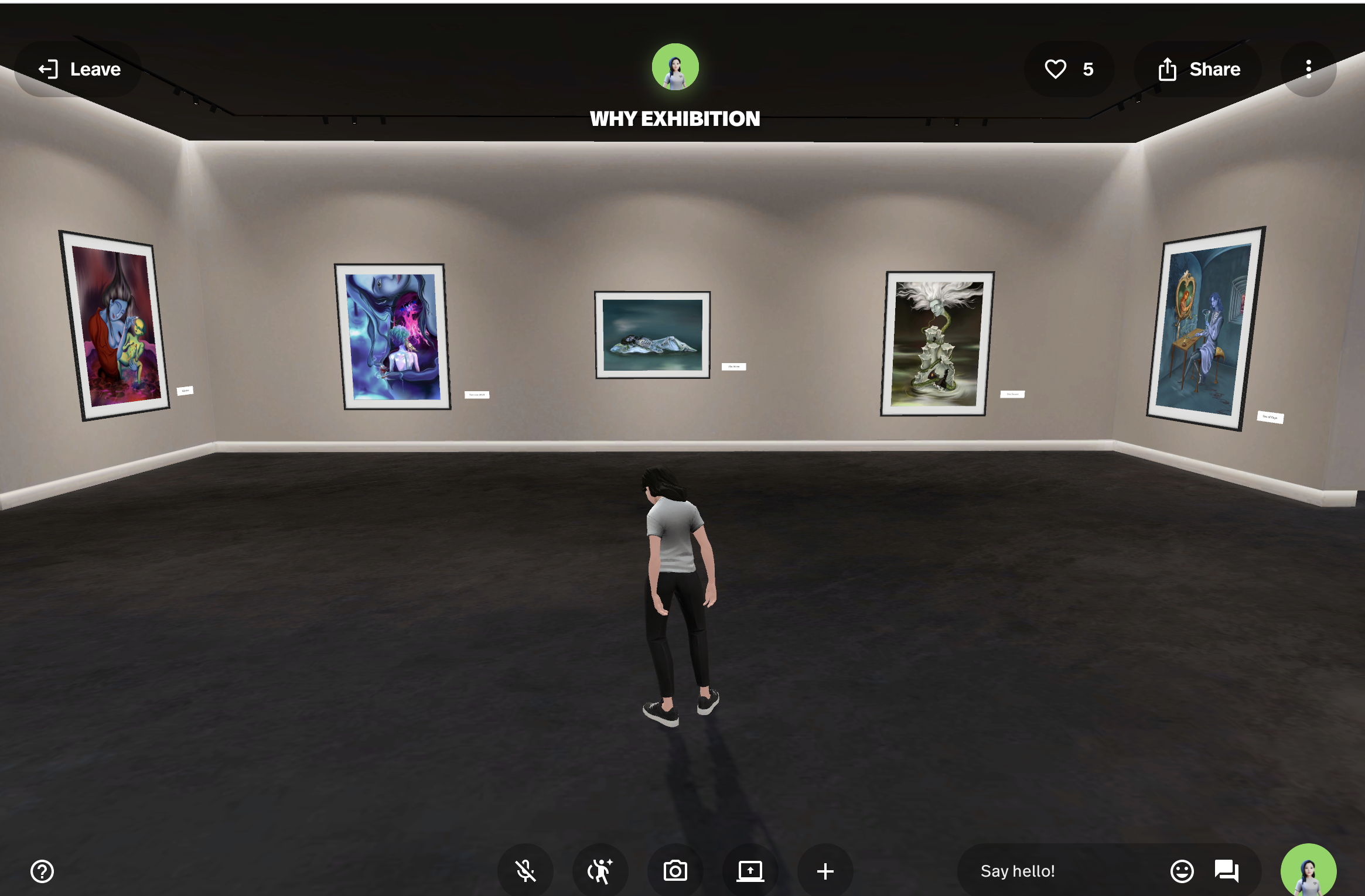
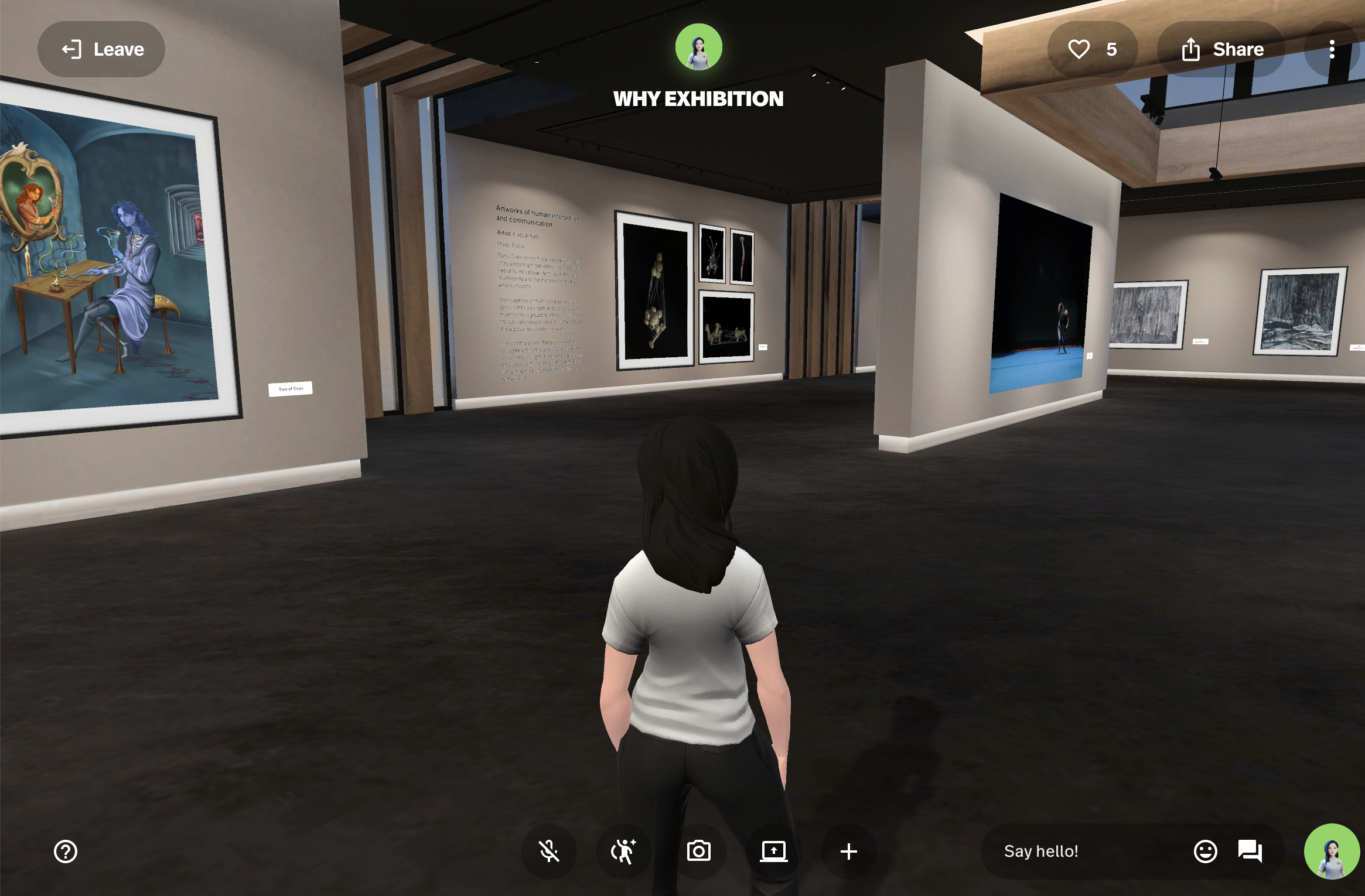
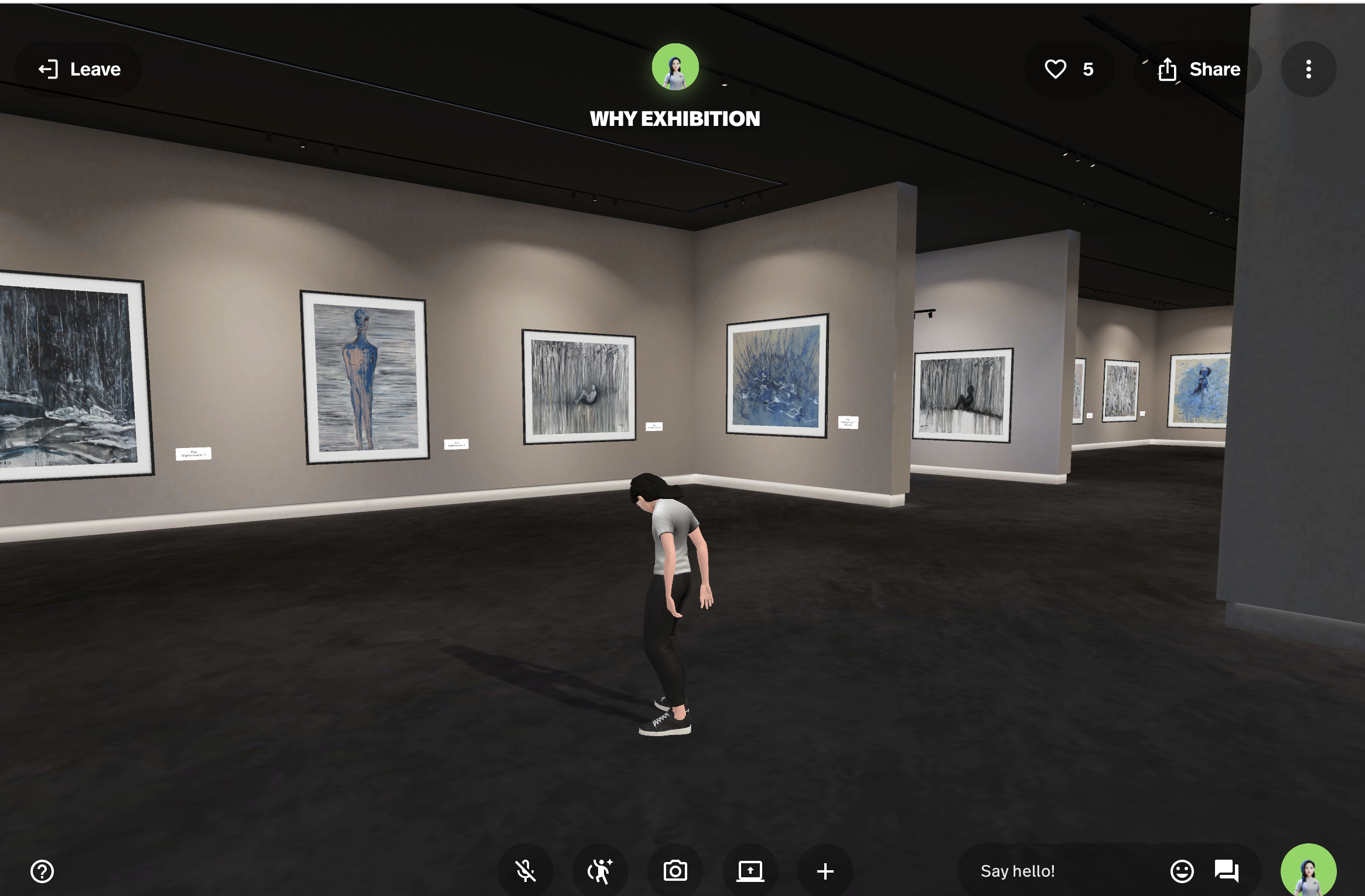
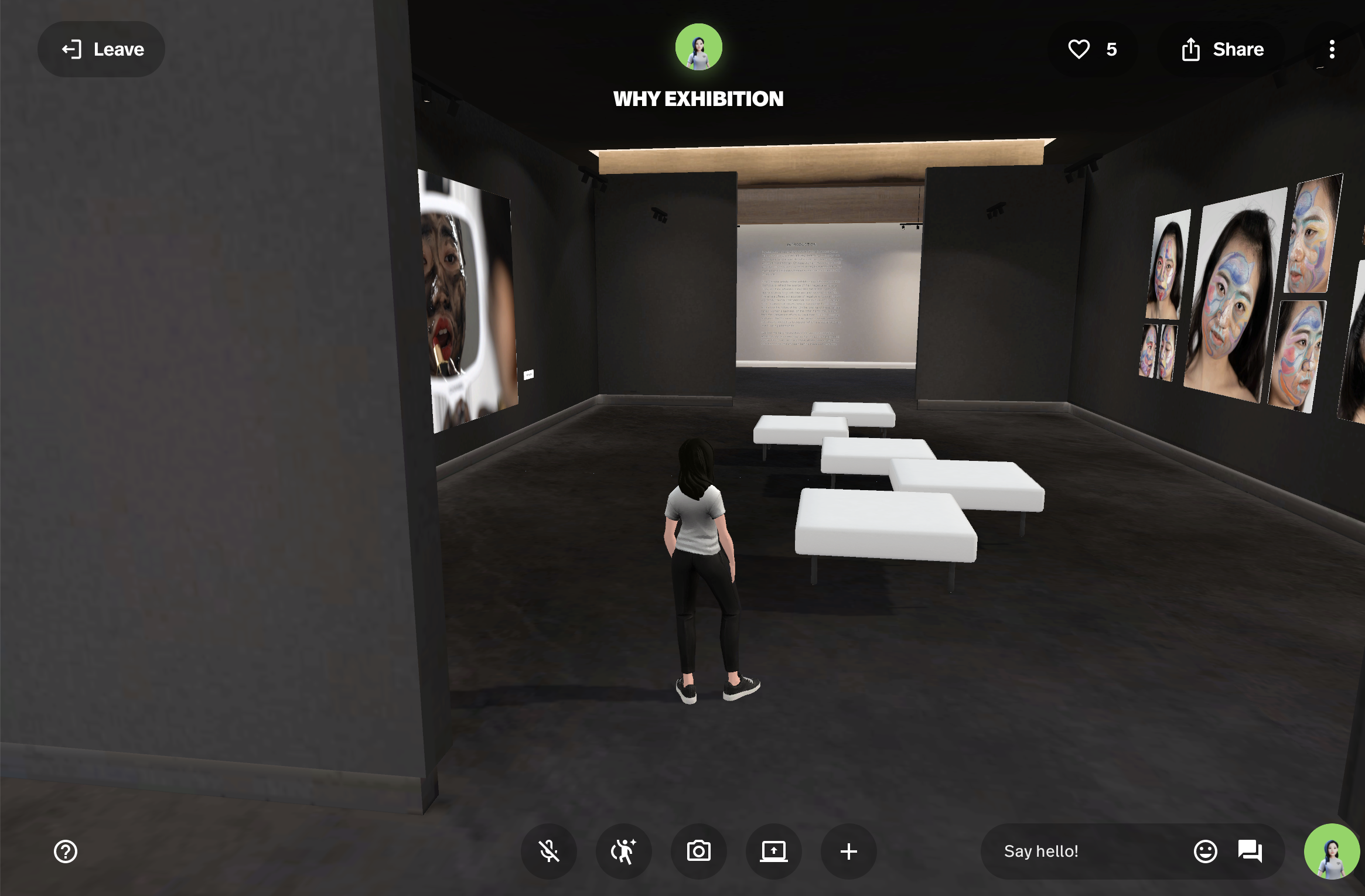
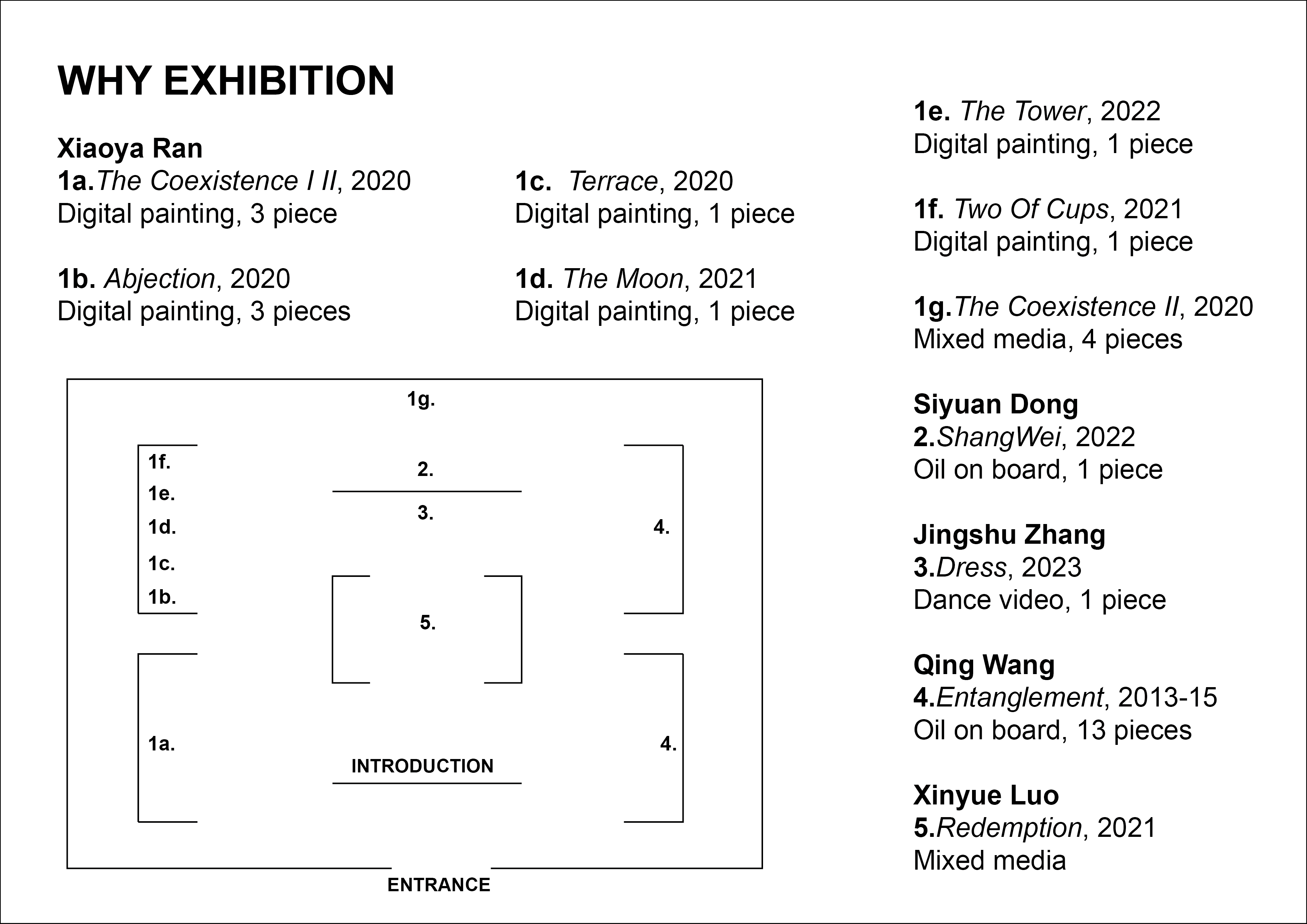
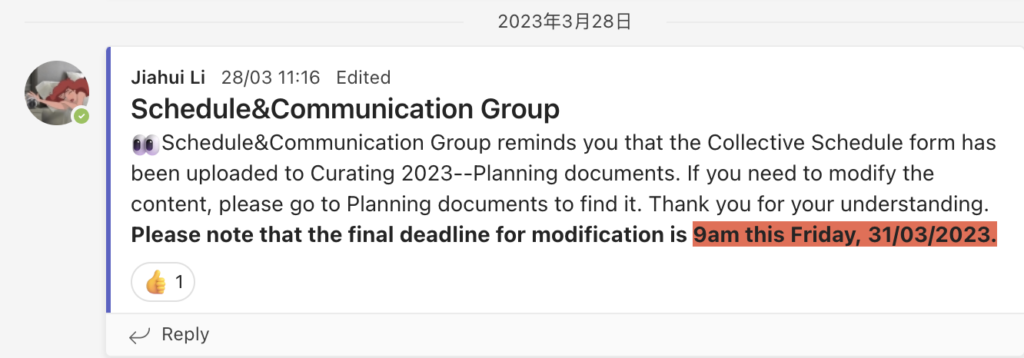 Figure 1 Screenshot in Team
Figure 1 Screenshot in Team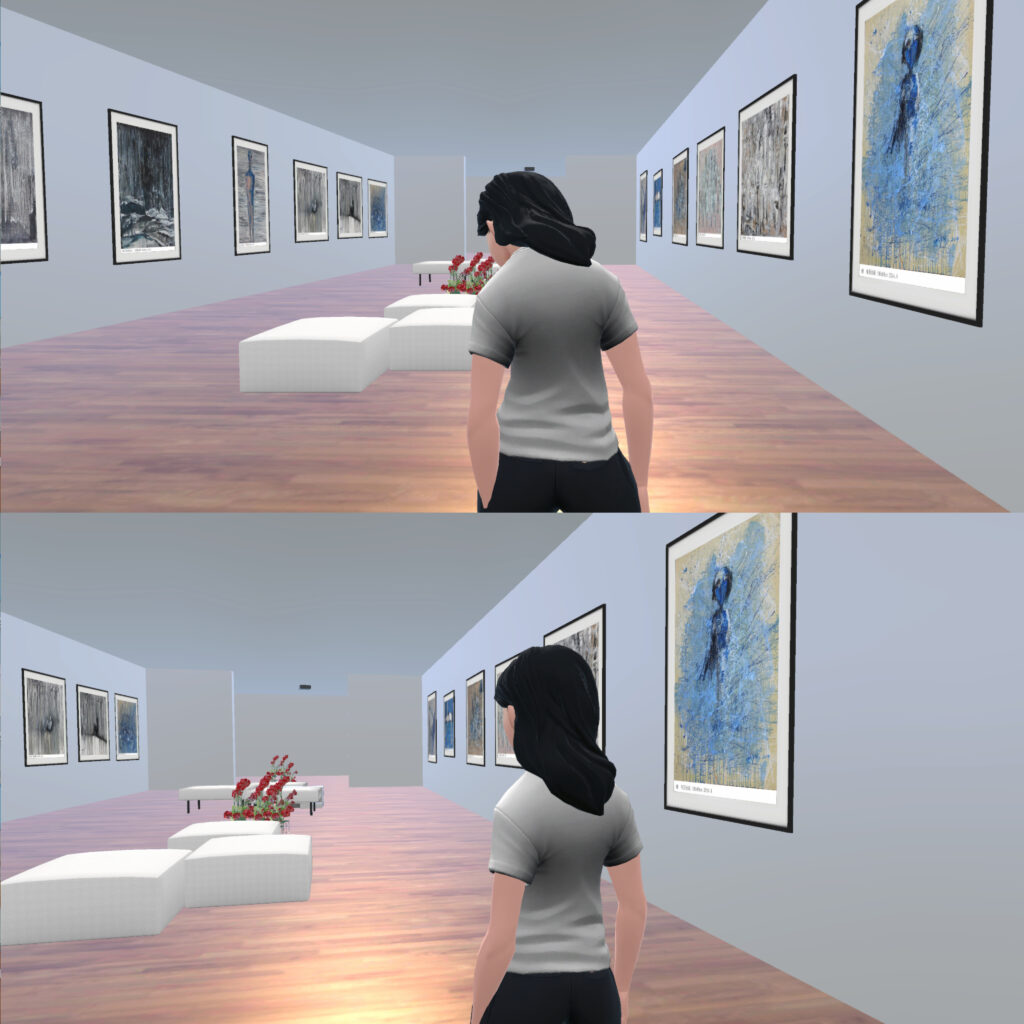
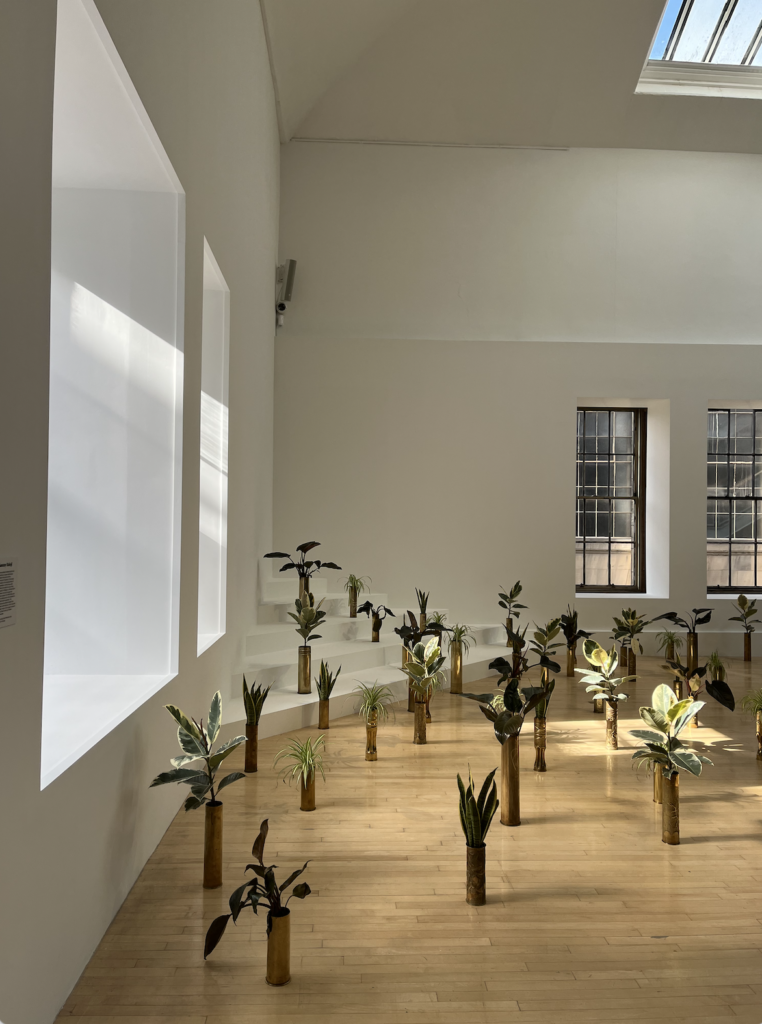
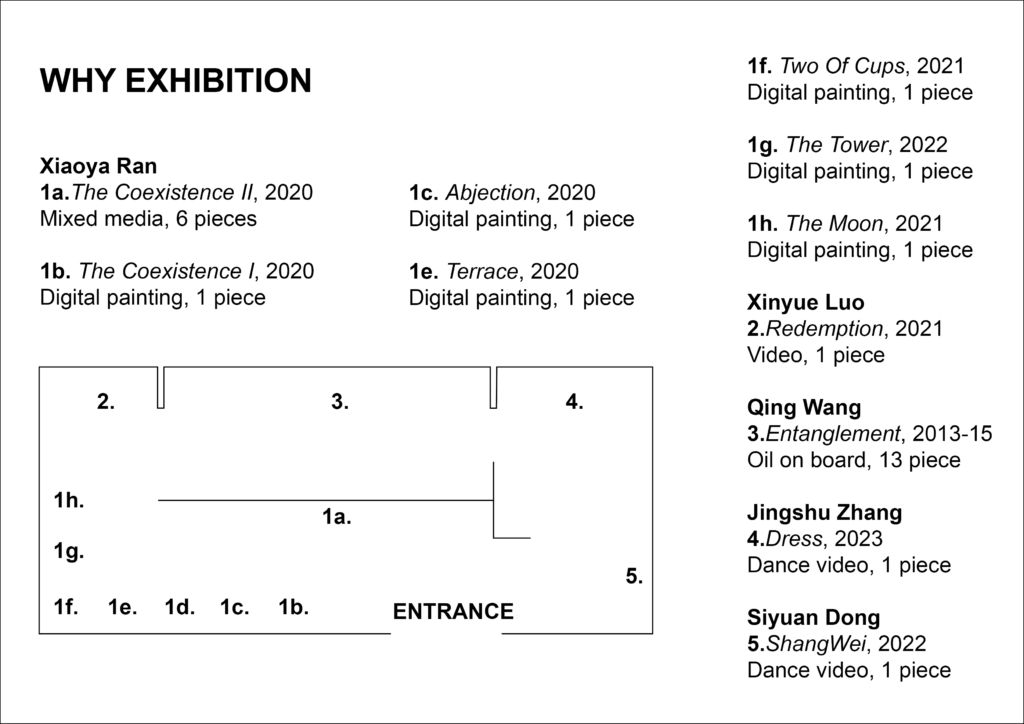
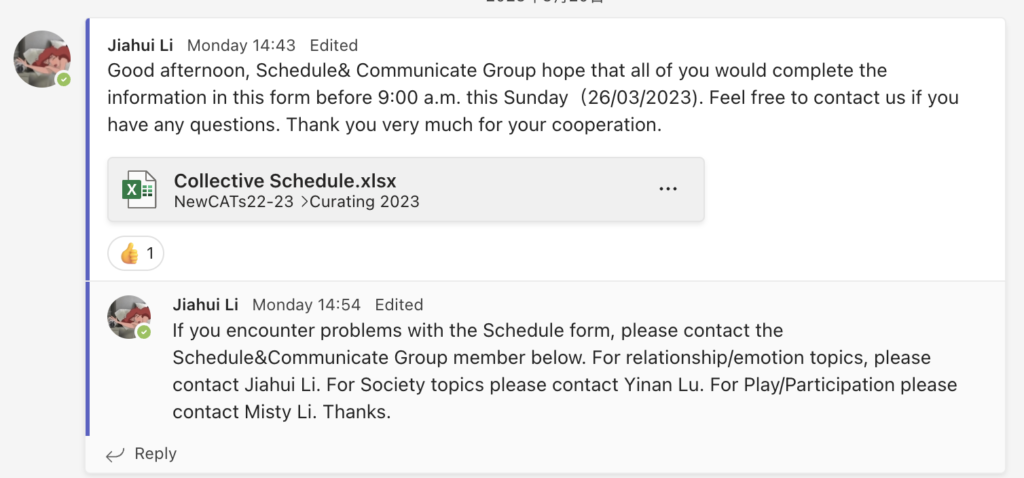
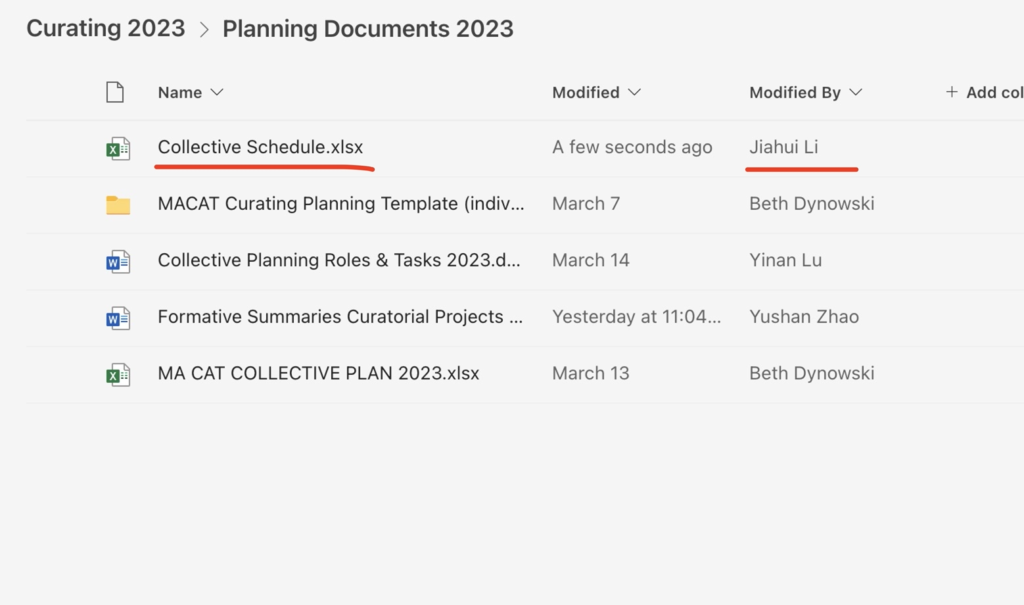
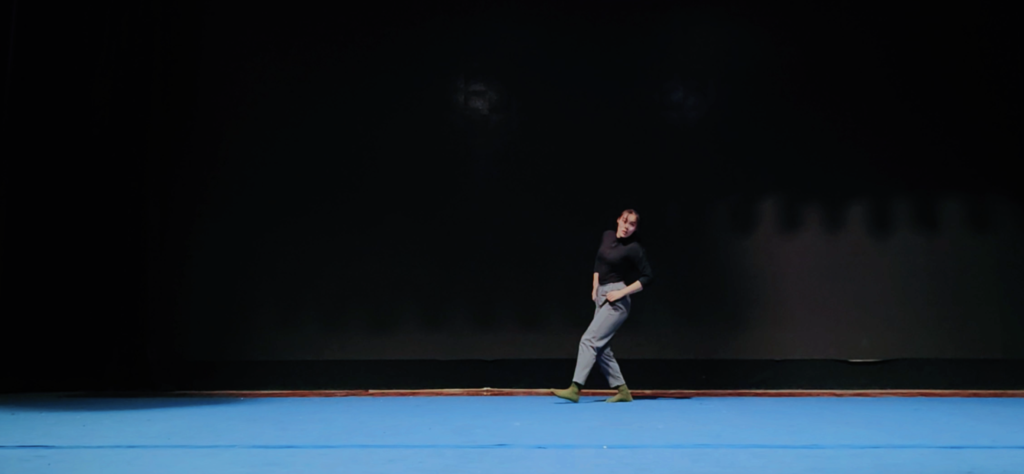 Figure 1 Screenshot from Skirt dance video ©️Jingshu Zhang
Figure 1 Screenshot from Skirt dance video ©️Jingshu Zhang